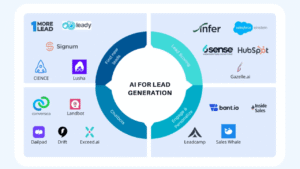Artificial Intelligence is moving fast. Every few months, we see new models trying to outshine the previous ones.
If you’ve been keeping up with AI advancements, you’ve probably heard about Alibaba’s Qwen 2.5-Max, that has generated significant buzz, especially following its launch in the beginning of 2025.
But what exactly is it? How does it compare to other leading models like GPT-4o, Claude 3.5 Sonnet, and DeepSeek V3? And most importantly, what makes it stand out? Let’s explore this exciting new AI model.
What Is Qwen 2.5-Max?
Qwen 2.5-Max is Alibaba’s most advanced AI model, designed to compete with industry leaders in large-scale AI. Built using a Mixture-of-Experts (MoE) architecture, it efficiently manages computational resources while maintaining high performance. Unlike previous Qwen models, Qwen 2.5-Max is not open-source, making it a proprietary model available via Alibaba Cloud’s API and Qwen Chat.
Key Features of Qwen 2.5-Max
- Mixture-of-Experts (MoE) Architecture – Unlike dense models where all parameters are active for every task, MoE activates only the most relevant sub-networks, reducing computational costs while maintaining efficiency.
- 20 Trillion Tokens Training – The model has been trained on an enormous dataset, covering various topics, languages, and contexts.
- Advanced Fine-Tuning Techniques – Supervised Fine-Tuning (SFT) and Reinforcement Learning from Human Feedback (RLHF) help refine responses for better accuracy and user alignment.
- 128K Token Context Window – One of the highest in the industry, allowing it to process long documents, legal contracts, and research papers in one go.
- Multimodal Capabilities – Supports text, image, audio, and video processing, making it highly versatile.
- API Compatibility with OpenAI – Developers familiar with OpenAI’s API can easily integrate Qwen 2.5-Max into their workflows.
How Does Qwen 2.5-Max Compare to Other AI Models?
When evaluating an AI model, benchmarks tell us how well it performs compared to its competitors. Let’s break it down across several categories:
-
Performance Benchmarks
Qwen 2.5-Max competes with GPT-4o, Claude 3.5 Sonnet, and DeepSeek V3 in various benchmarks. Here’s how it stacks up:
- Arena-Hard (Preference Benchmark): Qwen 2.5-Max leads with 89.4, ahead of DeepSeek V3 (85.5) and Claude 3.5 Sonnet (85.2).
- General Knowledge (MMLU-Pro): Scores 76.1, surpassing DeepSeek V3 (75.9) but slightly trailing Claude 3.5 Sonnet (78.0).
- Coding (LiveCodeBench & HumanEval): Qwen 2.5-Max scores 92.7% on HumanEval, beating GPT-4o (90.1%) and DeepSeek V3 (88.9%).
- General AI Tasks (LiveBench): Achieves 62.2, outperforming DeepSeek V3 (60.5) and Claude 3.5 Sonnet (60.3).

-
Cost Efficiency
One of Qwen 2.5-Max’s biggest advantages is its cost-effectiveness. Here’s a comparison of cost per million tokens:
| AI Model | Cost per Million Tokens |
| Qwen 2.5-Max | $0.38 |
| GPT-4o | $5.00 |
| DeepSeek-V3 | $0.25 |
| Claude 3.5 Sonnet | $3.00 |
With a price tag of just $0.38 per million tokens, Qwen 2.5-Max is 10 times cheaper than GPT-4o and 8 times cheaper than Claude 3.5 Sonnet, making it a budget-friendly choice for businesses.
-
Model Scalability & Architecture
Qwen 2.5-Max leverages a Mixture-of-Experts (MoE) approach, while many competitors still use traditional dense models. Here’s why MoE gives it an edge:
- Instead of activating all parameters for every task, MoE models activate only the most relevant parts.
- This makes Qwen more efficient, using 30% less computational power than dense models while delivering equal or better performance.
-
Creative vs Technical Tasks
While Qwen 2.5-Max is excellent at reasoning, knowledge recall, and coding, it trails behind Claude 3.5 Sonnet in creative writing tasks. Claude’s model is better at producing long-form narratives, storytelling, and literary content, whereas Qwen shines in structured problem-solving.
Key differences between Qwen 2.5-Max and DeepSeek V3
The comparison between Qwen 2.5-Max and DeepSeek V3 is particularly relevant in the current landscape of artificial intelligence, where rapid advancements and competitive releases are shaping the market.
Both models have emerged back-to-back, with Qwen 2.5-Max launched by Alibaba as a direct response to the growing capabilities of models like DeepSeek V3. This competition reflects a broader trend in AI development, where companies strive to push the boundaries of performance, efficiency, and user alignment.
Here’s a detailed comparison:
Architectural Differences
- Qwen 2.5-Max employs a Mixture-of-Experts (MoE) architecture with 72 billion parameters, which allows it to activate only the most relevant sub-networks for specific tasks. This dynamic activation leads to a 30% reduction in computational costs compared to traditional dense models.
- DeepSeek V3, on the other hand, utilizes a dense model architecture with its parameter size undisclosed. While it also incorporates some MoE principles, it does not leverage them as extensively as Qwen 2.5-Max.
Training and Performance
- Training Scale: Qwen 2.5-Max has been trained on over 20 trillion tokens, utilizing a diverse dataset that includes academic papers, code repositories, and multilingual web content. It also benefits from extensive fine-tuning through Reinforcement Learning from Human Feedback (RLHF) based on over 500,000 human evaluations.
- DeepSeek V3 reportedly has a lower training cost of around $6 million, compared to Qwen’s estimated $12 million, indicating different resource allocations in their development processes.
Benchmark Performance
In various benchmark tests, Qwen 2.5-Max consistently outperforms DeepSeek V3:
| Benchmark | Qwen 2.5-Max | DeepSeek V3 | Difference |
| Arena-Hard (Preference Benchmark) | 89.4 | 85.5 | +3.9 |
| MMLU-Pro (Knowledge & Reasoning) | 76.1 | 75.9 | +0.2 |
| GPQA-Diamond (General Knowledge QA) | 60.1 | 59.1 | +1.0 |
| LiveCodeBench (Coding Ability) | 38.7 | 37.6 | +1.1 |
| LiveBench (Overall Capabilities) | 62.2 | 60.5 | +1.7 |
Qwen leads in all tested categories, particularly in user preference alignment and coding tasks, while both models show similar performance in knowledge-based benchmarks like MMLU-Pro.
Accessibility and Cost
- Qwen 2.5-Max is a closed-source model, accessible via Alibaba Cloud’s API, which may limit its use for developers who prefer open-source solutions.
- In contrast, DeepSeek V3 is fully open weight, making it more accessible for developers looking for flexibility in implementation.
Context Handling
- Qwen 2.5-Max supports an impressive 128K token context window, allowing it to manage long documents effectively.
- DeepSeek V3 has a more limited context handling capability with a maximum of 32K tokens, potentially impacting its performance on extensive tasks.
How to Access Qwen 2.5-Max
If you want to try Qwen 2.5-Max, there are two main ways to access it:
- Qwen Chat – A web-based interface where you can interact with the model, similar to ChatGPT.
- Alibaba Cloud API – Developers can integrate it into their applications via Alibaba Cloud Model Studio.
Since the API follows OpenAI’s format, anyone familiar with OpenAI’s ecosystem can transition easily.
Final Thoughts
So, is Qwen 2.5-Max the next big thing in AI?
Absolutely. It offers top-tier performance, incredible cost efficiency, and an efficient MoE-based architecture. While it may not beat Claude 3.5 Sonnet in creative tasks, it’s an excellent choice for enterprises, researchers, and developers who need strong reasoning, coding, and efficiency.
As AI continues to evolve, Alibaba’s Qwen series is proving to be a serious contender. The real question now is: How much better will Qwen 3 be? Only time will tell!
Meanwhile, stay tuned to Tech-Transformation for more such amazing tech news and updates!







